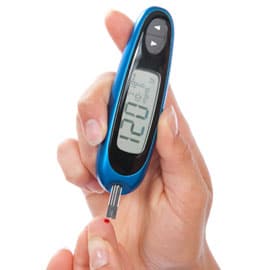
Tackling Type-2 Diabetes
In June, the American Medical Association officially recognized obesity as a disease, though the condition has long been regarded as a medical concern. Much more than an issue of excess weight and aesthetic dissatisfaction, living with obesity puts you at a greater risk of developing serious medical complications. One such obesity-related disease is type-2 diabetes, also commonly referred to as adult-onset diabetes.
 In June, the American Medical Association officially recognized obesity as a disease, though the condition has long been regarded as a medical concern. Much more than an issue of excess weight and aesthetic dissatisfaction, living with obesity puts you at a greater risk of developing serious medical complications. One such obesity-related disease is type-2 diabetes, also commonly referred to as adult-onset diabetes.
In June, the American Medical Association officially recognized obesity as a disease, though the condition has long been regarded as a medical concern. Much more than an issue of excess weight and aesthetic dissatisfaction, living with obesity puts you at a greater risk of developing serious medical complications. One such obesity-related disease is type-2 diabetes, also commonly referred to as adult-onset diabetes.
Medical weight loss programs are aimed at improving your health by reducing excess weight, thus lessening your risk of developing obesity-related diseases like diabetes.
Type-2 diabetes effects the metabolizing of glucose, or sugar, in the blood. Glucose is the body’s main source of fuel, so when glucose levels are low certain body functions will start to shut down. Glucose is regulated by a hormone called insulin. In those who have type-2 diabetes, either the body isn’t producing enough insulin to maintain ideal glucose levels, or your body resists the effects of insulin, allowing glucose levels to fluctuate freely.
Obesity and Type-2 Diabetes
Obesity is the leading risk factor for type-2 diabetes. The build-up of fatty tissue encourages cells to become more resistant to insulin, which disrupts the regulation of glucose levels. Carrying excess weight around the abdomen, such as stomach fat, is especially associated with type-2 diabetes.
If left untreated, diabetes can become a life-threatening decision. If you are struggling with obesity, it is a good idea to be aware of the potential symptoms of diabetes and talk to your doctor about steps you can take to prevent the condition from affecting your life.
Common symptoms of type-2 diabetes are:
- Increased thirst
- Hunger
- Fatigue
- Blurred vision
- Frequent infections
- Sores that are slow to heal
Once upon a time, type-2 diabetes was rare. In just over 20 years, from 1980 to 2011, the number of people diagnosed with type-2 diabetes increased more than 100 percent across all age groups, with those over the age of 75 experiencing the greatest jump in diagnosis at a 167 percent increase.
Type-2 diabetes is now the most common form of diabetes, accounting for between 90 and 95 percent of all diabetic diagnoses. If current trends continue, the Centers for Disease Control estimate that one in three American adults will have diabetes by 2050. As more Americans struggle with obesity, the diagnosis rates of type-2 diabetes will continue to rise.
Obesity is now looked at as a disease in and of itself, but that does not change the fact that living with obesity can increase your risk for developing an array of other conditions, as well. As you lose weight, pay attention to the ways losing weight can improve your health.




